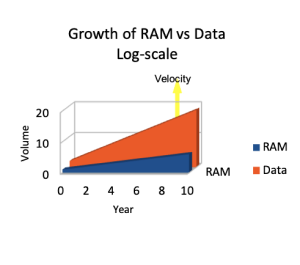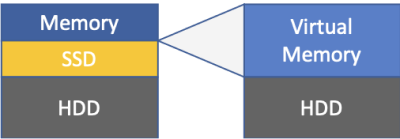Overview
BangDB is more than just a NoSql database. It is designed to help developers and users to solve problems with ease and speed and build powerful applications by focusing on the use case and leaving the rest of the heavy lifting to the database.
BangDB is a NoSQL database platform which allows developers to ingest any kind of data into the system in streaming or batch manner, then analyze the data in absolute and probabilistic ways in order to take some actions to optimize the business operations and do all these with very high speed to ensure continuous intelligence delivery out of the platform.
BangDB could be thought as a converge data platform designed for the rapidly changing data trend and also to be resilient to tolerate future changes and requirements. NoSQL + AI + Stream is a way to sum up the proposition.
When it comes to deal with the fast-moving data from devices, logs, clickstreams etc. we need to have streaming mechanism to easily ingest data. Ingestion alone will not do much as we need to continuously analyze data as it arrives. Therefore, we need to have timeseries data analysis system in place.
It's important to note that bringing another streaming system and integrating it with the NoSql database will not be able to do the justice to both the “ease of use & faster time to market” from developers' perspective and “continuous intelligence with sub-sec latency” from the use case requirement angle. Hence, we must have streaming component natively integrated within the NoSQL itself.
Similarly, more and more use cases are demanding predictive analysis which in turn requires machine learning or AI component. Again, in order to be able to train and predict on streaming data to achieve the goal of continuous intelligence, we must have AI component natively integrated within the NoSQL itself.

Since we are talking about ingesting data from heterogenous set of sources, therefore it will not be possible to deal with upfront structuring of the data before ingestion can begin. At the same time, it will also be not prudent to define all data types in a singular structure. Hence if on one hand we need to worry about how to avoid structuring of the data then on the other hand we will need to employ more than one structure within the system down the stream in order to efficiently process, store and retrieve them.
Therefore, multi modeling becomes important which allows us to deal with different data types in the same database, for ex; documents, timeseries, graph, opaque data etc. and at the same time it liberates us from putting brittle requirement of upfront structuring of the data.

Most of these data are coming from sensors, devices, logs, machines, etc. which are hyper local in nature. In order to process these data, most of the contemporary solutions or platforms/tools, take all these data into some cloud or data center and then process it before taking any action. This method has many problems and people have realized it already.
While on one hand we have problem of taking lots of data over the wire to the cloud or data centers, at the same time we lose the opportunity to act quickly and locally even though the data and insights were all there at the local level.
Therefore it not only becomes inefficient, cost intensive but at the same time it becomes very hard to enable the hyperlocal use cases. Hence, we need to have system which is connected from local to cloud or data center with ability to process and analyze data at both local and cloud level. This architecture demands embedded computing and analytics with store.

Further, most of the data platform in the market boasts of in-memory only platform. This to my mind is a limitation rather than a feature. Assembling lots of memory makes the proposition very costly and then irrespective of whatever is the size of memory, the system remains brittle in a sense that it will always require extra memory in order to process another byte beyond memory size.
Therefore, we must get rid of the this "bug" and allow data to be overflowed to the disk. But going to disk makes the processing too slow and this was the main reasons why other platform went "in-memory" only approach.

BangDB implements IO-Layer which sits on top of ext3/4 like file system and allows db to use SSDs to enhance the performance even when it overflows from memory to fs. Within a boundary, this mechanism allows us to go beyond memory and degrade gracefully for long period of time until the system scales for higher load.
This especially very helpful for the scenarios where the system has to be designed for peak load even though that peak exists for tiny part of the computing life cycle. Further, it brings the needed flexibility and resilience when it comes to dealing for burst of data supply and system will not fail for the need of more memory but instead will handle the scenario gracefully and allow it to continue function without break. Finally, with the use of SSD is a particular way, overall cost gets reduced significantly since it no longer requires assembly of lots of memory upfront.

Therefore, BangDB is designed for all these trends and requirements and it has been developed from ground up in C/C++ to align with the use cases, requirements and pain points of the developers and users. We are in process of adding lot more binaries in coming days and we will be very aggressive in adding more capabilities and features.
Since BangDB allows us to control the data and the way we deal with it, same should get transferred to the developers and users.